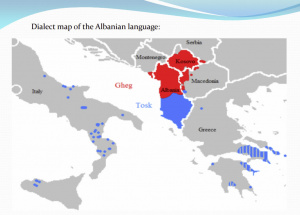Language/Tosk-albanian/Grammar/Conditional-Mood
Hi Tosk Albanian learners! 😊
In today's lesson, we will be discussing the conditional mood in Tosk Albanian. This is an important part of the language and it is essential to understand it in order to communicate effectively. We will look at how to form the conditional mood, when to use it, and some examples of its usage.
Take a moment to explore these relevant pages as you conclude this lesson: Future Tense, Gender, How to Use Have & Adverbs of Manner.
Forming the Conditional Mood[edit | edit source]
The conditional mood in Tosk Albanian is formed by adding the suffix -të to the verb stem. For example, the verb "dua" (to want) becomes "dëshirojtë" (would want).
Irregular Verbs[edit | edit source]
There are some irregular verbs that do not follow the same pattern. For example, the verb "jam" (to be) becomes "doja" (would be).
When to Use the Conditional Mood[edit | edit source]
The conditional mood is used to express a hypothetical situation or a wish. It can also be used to express politeness.
For example:
- "Unë doja të shkoja në shkollë" (I would like to go to school).
- "A doja të më ndihmonit?" (Would you help me?).
Examples[edit | edit source]
Here are some examples of the conditional mood in use:
- "Unë doja të bëja një kafe" (I would like to make a coffee).
- "A doja të shkonim në qytet?" (Would you like to go to town?).
- "Unë doja të flisja me ty" (I would like to talk to you).
- "A doja të më ndihmonit me punën?" (Would you help me with the work?).
If you have any questions, please ask them in the comments section below.
Feel free to edit this wiki page if you think it can be improved. 😎
Other Lessons[edit | edit source]
- Nouns
- Gender
- Future Tense
- Questions
- How to Use Be
- Pronouns
- Give your Opinion
- How to Use Have
- Adjectives
- Negation

